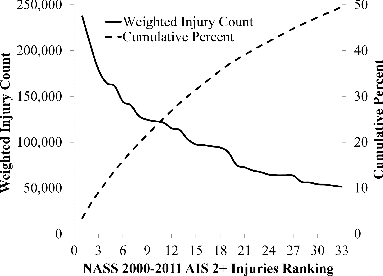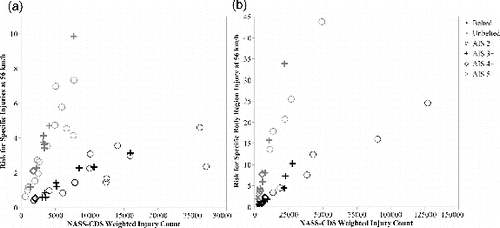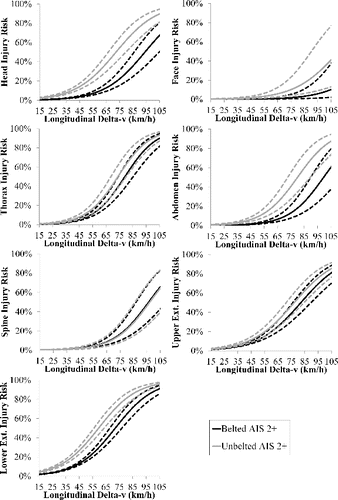Figures & data
Table 1 List of the injury risk curves produced for specific body regions and the injury risk model coefficients (α, β1, β2). The unweighted (NU) and weighted (NW) sample sizes, area under the receiver operating characteristic curve (AUROC), P value for belt status, and estimated risk at a 56 km/h longitudinal delta-V is provided for belted versus unbelted cases. For each risk curve, the higher injury risk at 56 km/h longitudinal delta-V between belted and unbelted occupants is bolded


Supplemental material


